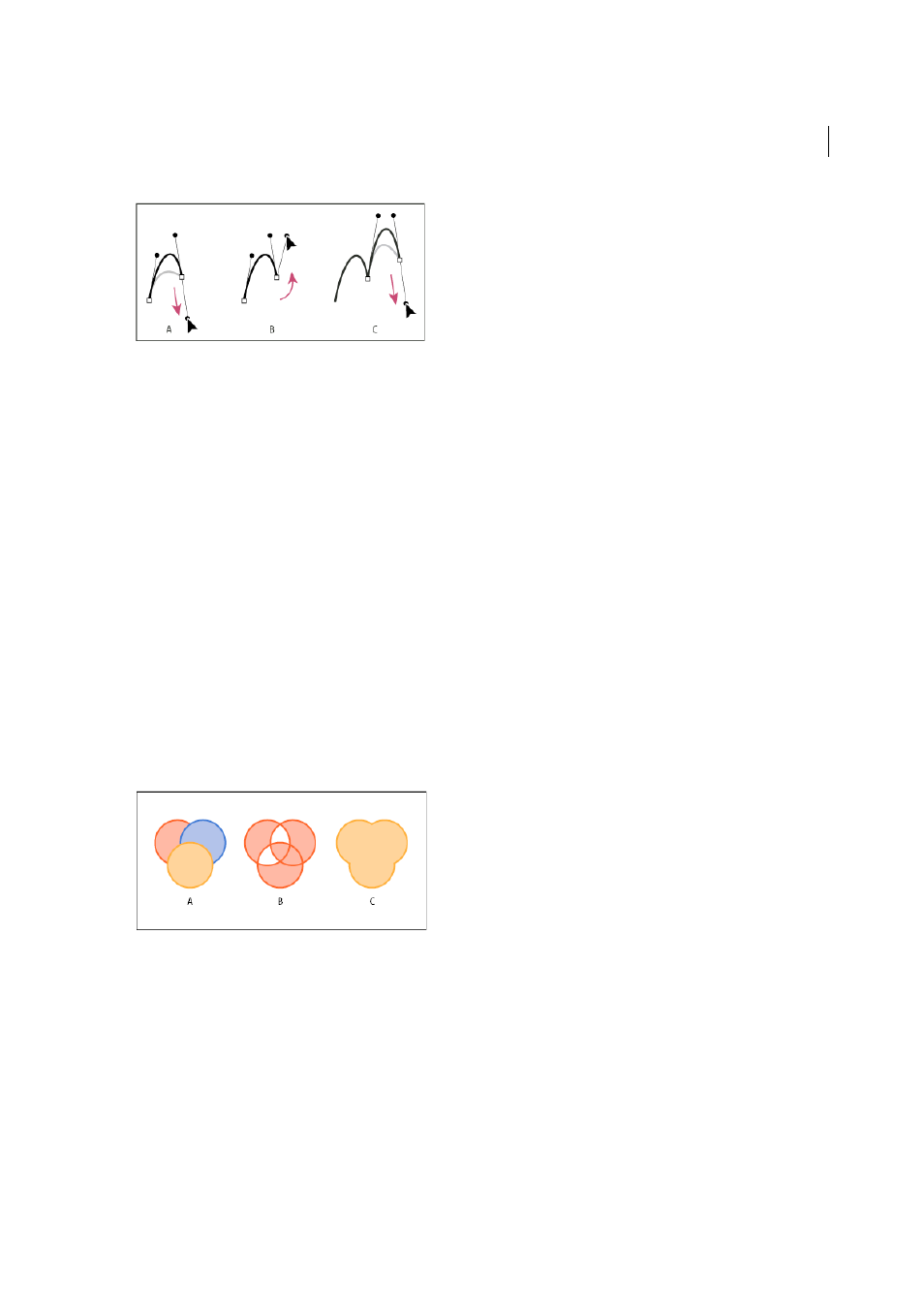Understanding paths and shapes, Types of paths and shapes, About paths – Adobe InDesign CC 2015 User Manual
Page 456

451
Drawing and painting
Last updated 6/6/2015
A Dragging a new smooth point B Pressing Alt/Option to split direction lines while dragging, and swinging direction line up C Result after
repositioning and dragging a third time
Understanding paths and shapes
Types of paths and shapes
You can create paths and combine them in a variety of ways in InDesign. InDesign creates the following types of paths
and shapes:
Simple paths
Simple paths are the basic building blocks of compound paths and shapes. They consist of one open or
closed path, which may be self-intersecting.
Compound paths
Compound paths consist of two or more simple paths that interact with or intercept each other. They
are more basic than compound shapes and are recognized by all PostScript-compliant applications. Paths combined in
a compound path act as one object and share attributes (such as colors or stroke styles).
Compound shapes
Compound shapes consist of two or more paths, compound paths, groups, blends, text outlines,
text frames, or other shapes that interact with and intercept one another to create new, editable shapes. Some compound
shapes appear as compound paths, but their component paths can be edited on a path-by-path basis and do not need
to share attributes.
A Three simple paths B Compound path C Compound shape
About paths
As you draw, you create a line called a path. A path is made up of one or more straight or curved segments. The
beginning and end of each segment are marked by anchor points, which work like pins holding a wire in place. A path
can be closed (for example, a circle), or open, with distinct endpoints (for example, a wavy line).
You change the shape of a path by dragging its anchor points, the direction points at the end of direction lines that appear
at anchor points, or the path segment itself.
